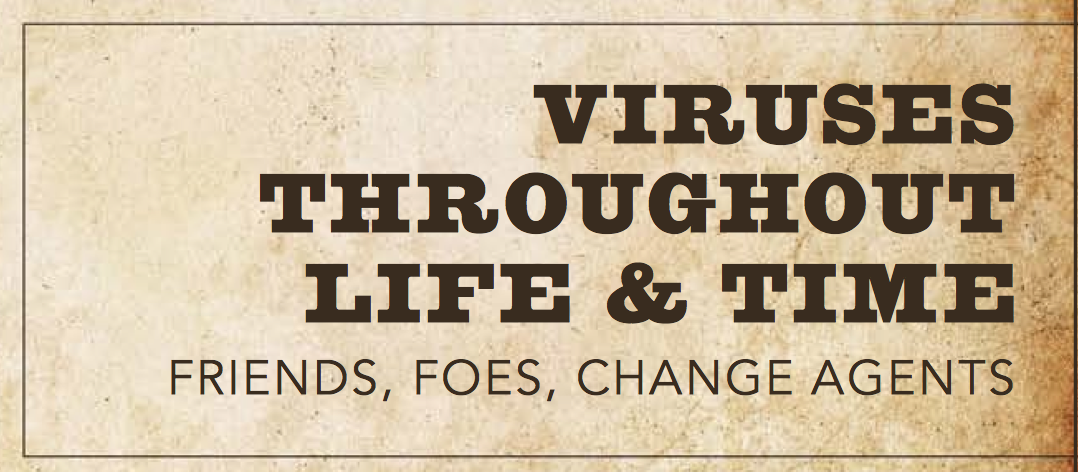 There is a new report from the American Academy of Microbiology out that may be of interest: Viruses Throughout Life & Time: Friends, Foes, Change Agents. In a way this could be seen as a formal declaration of viral love by a collection of eminent scientists. Mostly I agree with what is in the report, through I do have a few issues here and there.
There is a new report from the American Academy of Microbiology out that may be of interest: Viruses Throughout Life & Time: Friends, Foes, Change Agents. In a way this could be seen as a formal declaration of viral love by a collection of eminent scientists. Mostly I agree with what is in the report, through I do have a few issues here and there.
Overall, the report provides a wealth of useful information about new findings relating to how viruses can be viewed as beneficial to a variety of organisms and ecosystems. There is information here on viral evolution, on viral diversity, on viral functions and structure, and on the impact viruses have had and continue to have on various life forms. And perhaps most importantly, the writing is geared towards a more general audience that in many big reports of this kind. So I think most people who read it will learn something new.
Overall, I would say that viruses are generally poorly understood overall and it will be critical to include studies of viruses as part of any study of microbial diversity or microbial communities. I note that when we started the GEBA “Genomic Encyclopedia of Bacteria and Archaea” project many of us wanted the project to be “A Genomic Encyclopedia of Microbomes – GEM” and wanted to include viruses (and microbial eukaryotes) as part of the project. Alas, we lost that argument – but I still think viral diversity is understudied and under appreciated.
Great post. We have <0.01% of predicted viral genome diversity available in our databases, and the sampling we have is highly biased. Exacerbating the challenge, viruses don't have a conserved genetic element like 16S rRNA in bacteria that we can target to survey diversity. I agree – viral diversity deserves more attention; however, before we can move to better integrate viral ecology into larger microbial ecology studies, we need a better genome database.
Yes, that is why we wanted to do GEM …
See comments on G+